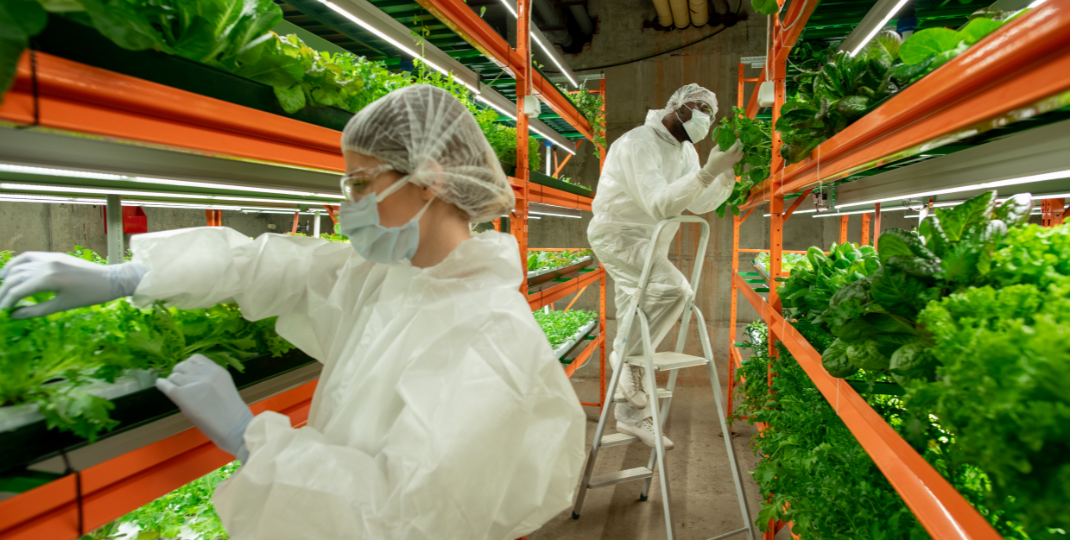Cell Cultivated meat, also known as lab-grown or cultured meat, is a groundbreaking innovation in the field of sustainable food production. Unlike traditional methods of raising and slaughtering animals for meat consumption, Cultivated meat is produced by taking a small sample of animal cells and replicating them in a controlled laboratory environment. This process eliminates the need for animal farming and reduces the environmental impact associated with livestock agriculture. Furthermore, Cultivated meat has the potential to address numerous ethical concerns surrounding animal welfare while providing a viable solution to the growing global demand for meat. With advancements in technology and increasing interest from consumers, Cultivated meat holds immense promise as a sustainable and ethical alternative to conventional meat production.

What are the long-term health effects of consuming cell-cultivated meat?
The long-term health effects of consuming cell-cultivated meat, also known as lab-grown or cultured meat, are still being studied and are not yet fully understood. However, there are several potential benefits to consider. Since cell-cultivated meat is produced in a controlled environment without the use of hormones or antibiotics, it may have lower levels of Cultivated meat contaminants and pose fewer risks of foodborne illnesses compared to conventionally farmed meat. Furthermore, it could potentially reduce the consumption of saturated fats, which are linked to various health issues, such as heart disease. However, more research is needed to evaluate its nutritional profile and potential long-term impacts on human health.

How does the taste and texture of cell-cultivated meat compare to traditional meat?
The taste and texture of cell-cultivated meat, also known as lab-grown or cultured meat, can be similar to traditional meat but may vary depending on the specific process and techniques used. Scientists aim to replicate the composition of real meat by growing muscle cells in a laboratory setting. While there have been advancements, some aspects like marbling and fat content are still being perfected. Generally, cell-cultivated meat can have a similar taste and texture to traditional meat, but further research and development are needed to achieve an exact replica.
What is the environmental impact of large-scale production of cell-cultivated meat?
The large-scale production of cell-cultivated meat, also known as lab-grown or cultured meat, has the potential to significantly reduce the environmental impact of conventional livestock farming. Traditional livestock farming is associated with deforestation, greenhouse gas emissions, water pollution, and excessive land and water usage. In contrast, cell-cultivated meat production requires minimal land and water resources and produces lower emissions. However, there are still some environmental concerns associated with this technology, such as the energy requirements for culturing cells and the sourcing of necessary growth media, which could have negative impacts if not managed properly. Overall, though, cell-cultivated meat has the potential to be a more sustainable and environmentally friendly alternative to traditional meat production.
How do the nutritional profiles of cell-cultivated meat and traditional meat differ?
Nutritional profiles of cell-cultivated meat and traditional meat differ in a few key aspects. Firstly, cell-cultivated meat tends to have a lower fat content compared to traditional meat, making it potentially less calorie-dense. Additionally, the fatty acid composition of cell-cultivated meat can be manipulated to contain healthier fats, such as higher levels of omega-3 fatty acids and lower levels of saturated fats. On the other Cultivated meat hand, traditional meat often contains higher levels of cholesterol. Furthermore, cell-cultivated meat lacks certain vitamins and minerals that are naturally present in traditional meat due to the absence of connective tissues and bones, which may need to be supplemented. Overall, while both types of meat can provide essential nutrients, cell-cultivated meat offers the potential for a more controlled and tailored nutritional profile.
Can cell-cultivated meat be produced at a cost that is affordable for consumers?

Producing cell-cultivated meat at an affordable cost for consumers is a complex challenge that requires several factors to be considered. Initially, the high costs associated with the technology involved in lab-grown meat production make it expensive. However, as the industry evolves and scales up, advancements in biotechnology, automation, and process optimization can lead to cost reductions. Additionally, improvements in cell culture techniques, such as using serum-free media or plant-based growth factors, can lower production costs. Furthermore, the development of efficient and sustainable production methods, such as bioreactors, can contribute to cost savings. Overall, while the current cost of cell-cultivated meat may be high, further research and technological advancements have the potential to bring down prices and make it more affordable for consumers.

What are the potential risks of contamination or cross-contamination in cell-cultivated meat production?
The potential risks of contamination or cross-contamination in cell-cultivated meat production are mainly related to microbial contamination. Since cell-cultivated meat is grown in a controlled environment, any introduction of harmful microorganisms can lead to the growth of pathogens that could cause foodborne illnesses. Cross-contamination may occur during various stages of the production process, including sourcing and handling of initial cells, nutrient media preparation, bioreactor operation, and packaging. Contaminants from the external environment, equipment, or personnel can also pose a risk. Furthermore, if not properly managed, viruses or other infectious agents could infiltrate the cell cultures. To mitigate these risks, strict protocols for hygiene, sanitation, and quality control must be followed throughout the entire cell-cultivated meat production process.
How will the introduction of cell-cultivated meat affect traditional livestock farming industries?
The introduction of cell-cultivated meat is expected to have a significant impact on traditional livestock farming industries. As cell-cultivated meat can be grown in laboratories without the need for raising and slaughtering animals, it could potentially reduce the demand for traditional livestock products. This would lead to decreased production and consumption of conventional meat, which may result in job losses and financial hardships for farmers involved in the livestock industry. However, it could also create new opportunities for farmers as they transition into producing cells for meat cultivation or explore alternative agricultural activities. Overall, the extent of the impact will depend on factors such as consumer acceptance, cost competitiveness, and regulatory frameworks surrounding cell-cultivated meat.

Are there any ethical concerns associated with the production and consumption of cell-cultivated meat?

There are indeed ethical concerns associated with the production and consumption of cell-cultivated meat. One major concern is the welfare of animals, as traditional livestock farming involves cruelty and suffering. However, it is argued that cell-cultivated meat eliminates the need for raising and slaughtering animals, thus potentially reducing animal suffering. Another concern is the potential loss of livelihood for farmers and others involved in the traditional meat industry. Additionally, there are debates about the long-term environmental impact and sustainability of large-scale cell-cultured meat production. The high energy requirements and resource use during the production process raise questions about its overall carbon footprint and ecological consequences. Overall, these ethical concerns highlight the need for careful evaluation and regulation of cell-cultivated meat to ensure ethical practices and a sustainable future.
Cultivated meat: A Breakthrough Solution for Sustainable and Ethical Food Production
In conclusion, cell-cultivated meat holds great potential in revolutionizing the food industry. With its ability to address critical issues such as animal welfare, environmental sustainability, and public health concerns, it offers a promising alternative to traditional methods of meat production. However, further research and development are necessary to enhance its taste, texture, and cost-effectiveness in order to make it widely accessible to consumers. As more investment and collaboration occur within the field, we can anticipate a future where cell-cultivated meat becomes a mainstream option, offering a sustainable and ethical choice for meat lovers worldwide.
